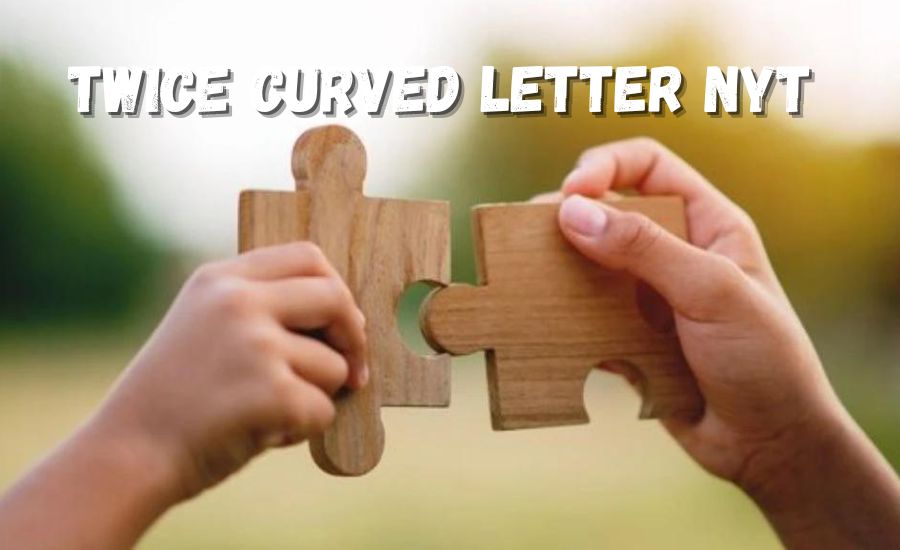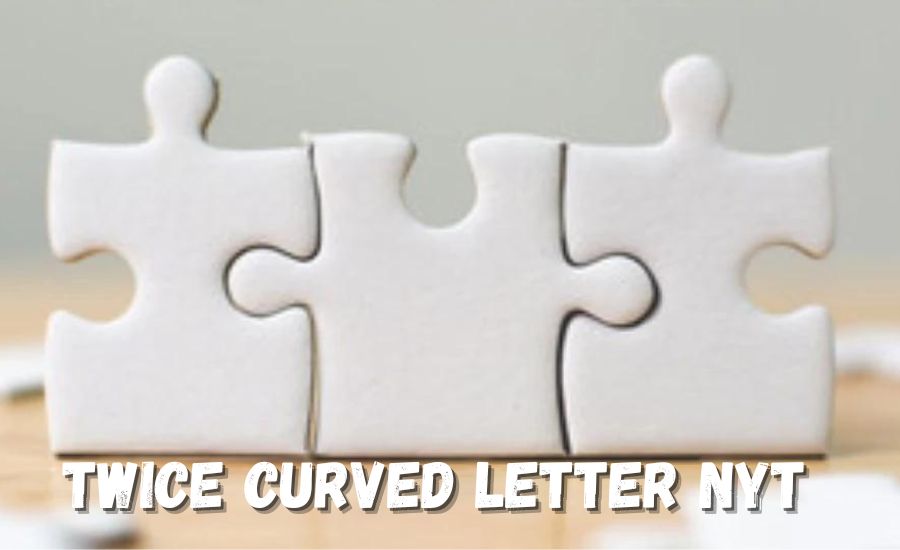The New York Times crossword puzzle is a daily ritual for many, offering a mix of challenge, intrigue, and satisfaction that keeps solvers coming back day after day. Among the myriad clues that puzzle enthusiasts encounter, one that often stands out is the “twice curved letter” clue. This seemingly simple hint can stump even seasoned solvers, but with a little insight, it becomes a doorway to understanding the deeper intricacies of crossword puzzles. In this article, we’ll delve into the “twice curved letter” clue, explore why “ESS” is the correct answer, and uncover the art and science behind crossword puzzle design.
What Does Twice Curved Letter Mean?
The clue “twice curved letter” refers to a letter in the alphabet that features two distinct curves. When we think of letters, we often focus on their functional use in language, but the visual design of letters is equally important, especially in the world of crossword puzzles. The answer to this clue is “ESS,” the letter “S,” known for its serpentine shape with two smooth, flowing curves.
Why “ESS” is the Perfect Answer
“ESS” fits the “twice curved letter” clue perfectly because of its unique shape. The letter “S” is composed of two distinct curves that mirror each other, creating a shape that is both symmetrical and dynamic. This design is not only aesthetically pleasing but also makes “S” one of the most recognizable letters in the alphabet. In the context of a crossword puzzle, the clue “twice curved letter” is a clever way to direct solvers to this particular letter without explicitly stating it.
The Evolution of Crossword Puzzles

Crossword puzzles have a rich history that dates back to the early 20th century. The first known crossword puzzle was published in the New York World newspaper in 1913, created by British journalist Arthur Wynne. Since then, crossword puzzles have evolved into a beloved pastime for millions around the world. The New York Times crossword, in particular, has become an iconic part of American culture, known for its challenging clues and clever wordplay.
The “twice curved letter” clue is an example of how crossword puzzles have evolved to include more visual and abstract clues. Early crossword puzzles focused primarily on straightforward definitions, but modern puzzles often include clues that require solvers to think about letters as shapes or symbols, adding an extra layer of complexity.
The Psychology of Puzzle-Solving
Why do people love solving crossword puzzles? The answer lies in the psychology of puzzle-solving. Crossword puzzles tap into our brain’s natural desire for pattern recognition and problem-solving. When we solve a crossword clue, our brain releases dopamine, a neurotransmitter associated with pleasure and reward. This creates a positive feedback loop that keeps us coming back for more.
The “twice curved letter” clue is a perfect example of how crossword puzzles engage our brains in this way. The clue challenges us to think about letters not just as symbols but as shapes, requiring us to use a different part of our brain than we do for most other tasks. This makes the moment of solving the clue all the more satisfying.
Tips for Solving Crossword Puzzles
For those new to crossword puzzles, the “twice curved letter” clue might seem daunting. However, with a few tips, anyone can improve their puzzle-solving skills:
- Look for Visual Clues: Pay attention to clues that refer to the shape of letters or words. These clues often require you to think about the visual aspect of the puzzle rather than just the definition of the words.
- Practice Pattern Recognition: The more puzzles you solve, the better you’ll become at recognizing common patterns and letter combinations. This will help you solve clues like “twice curved letter” more quickly.
- Use Context Clues: Sometimes, the surrounding words in the puzzle can give you hints about the answer. If you’re stuck on a clue, try solving the neighboring clues first to see if they provide any context.
- Take Breaks: If you’re struggling with a particularly tricky puzzle, it’s okay to take a break and come back to it later. Often, a fresh perspective is all you need to solve a difficult clue.
The Role of Design in Crossword Puzzles

Crossword puzzles are not just about words; they are also about design. The layout of the grid, the arrangement of the clues, and even the shape of the letters themselves all play a role in the puzzle-solving experience. The “twice curved letter” clue is a prime example of how the design of letters can be used to create engaging and challenging puzzles.
The letter “S” is a common choice for this type of clue because of its distinctive shape, but other letters with curves, such as “C” or “G,” could also be used in similar clues. Understanding the design principles behind crossword puzzles can give solvers an edge, helping them to anticipate and recognize these types of clues more easily.
Exploring Similar Clues
The “twice curved letter” clue is just one example of how crossword puzzles use letter shapes as clues. Other similar clues might include:
- “Curved Line”: This could refer to a single curve in a letter, such as the letter “C” or “U.”
- “Serpentine Shape”: A clue like this might also point to the letter “S” or even a word like “snake.”
- “Wavy Letter”: This could describe a letter with a wavy or undulating shape, such as “W” or “M.”
By becoming familiar with these types of clues, solvers can develop a better understanding of how to approach crossword puzzles and increase their chances of success.
The Significance of the NYT Crossword Puzzle
The New York Times crossword puzzle is more than just a game; it is a cultural institution. Since its debut in 1942, the NYT crossword has become one of the most widely recognized and respected puzzles in the world. The puzzle is known for its challenging clues, clever wordplay, and high standards of quality.
The “twice curved letter” clue is a great example of the type of creativity and ingenuity that has made the NYT crossword so beloved. It challenges solvers to think outside the box and rewards them with the satisfaction of finding the right answer.
Conclusion
Crossword puzzles are a unique blend of language, design, and problem-solving. The “twice curved letter” clue is just one example of how these elements come together to create a challenging and rewarding experience for solvers. Whether you’re a seasoned pro or a newcomer to the world of crosswords, understanding the intricacies of clues like this one can enhance your puzzle-solving skills and deepen your appreciation for the art of crossword puzzles.
As you continue to explore the world of crossword puzzles, remember that every clue is an opportunity to learn something new and challenge yourself in a fun and engaging way. So the next time you encounter the “twice curved letter” clue
Stay informed with the latest news and updates on: Dallas Insiders
